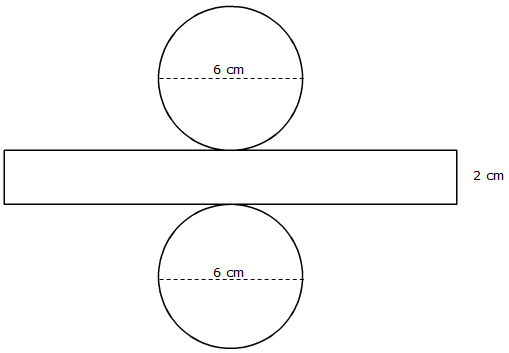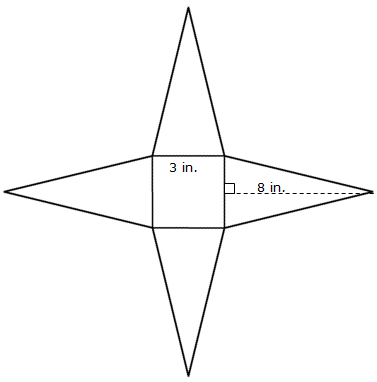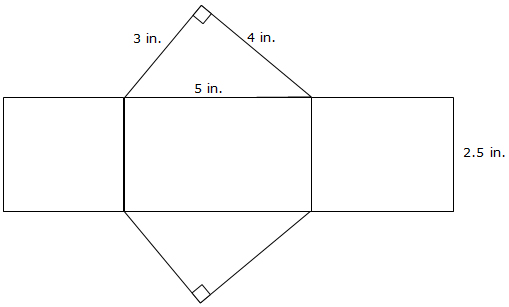
Click on the image below to access the interactive. Follow the directions on how to use a net to determine the total surface area of a rectangular prism.

![]()
Click on the image below to access the interactive. Follow the directions on how to use a net to determine the total surface area of a cylinder.

![]()
For each of the nets below, calculate the total surface area. Use 3.14 for π.
Cylinder:

Interactive popup. Assistance may be required. Remember that the length of the total, which is a rectangle, is equal to the circumference of the circular base. Interactive popup. Assistance may be required. Total Surface Area = 2 × Area of Circle + Area of Rectangle ≈ 2(3.14)(3 cm)2 + (6 cm)(3.14)(2 cm) = 56.52 + 37.68 = 94.2 square centimeters
Interactive popup. Assistance may be required. Total Surface Area = 2 × Area of Circle + Area of Rectangle ≈ 2(3.14)(3 cm)2 + (6 cm)(3.14)(2 cm) = 56.52 + 37.68 = 94.2 square centimeters

Square Pyramid:

Interactive popup. Assistance may be required. What is the formula for the area of a square?
Interactive popup. Assistance may be required. Total Surface Area = 4 × Area of Triangle + Area of Square = 4(1 over 2 1 2)(3 in.)(8 in.) + (3 in.)2 = 48 + 9 = 57 square inches
Triangular Prism:

Interactive popup. Assistance may be required. Which dimensions are the base length and height of the triangular base? Use these dimensions, along with the formula A = 1 over 2 1 2bh, to determine the area of each triangular base.  Interactive popup. Assistance may be required. Total Surface Area = 2 × Area of Triangle + Area of Each Rectangle = 2(1 over 2 1 2)(3 in.)(4 in.) + (4 in.)(2.5 in.) + (5 in.)(2.5 in.) + (3 in.)(2.5 in.) = 12 + 10 + 12.5 + 7.5 = 42 square inches
Interactive popup. Assistance may be required. Total Surface Area = 2 × Area of Triangle + Area of Each Rectangle = 2(1 over 2 1 2)(3 in.)(4 in.) + (4 in.)(2.5 in.) + (5 in.)(2.5 in.) + (3 in.)(2.5 in.) = 12 + 10 + 12.5 + 7.5 = 42 square inches